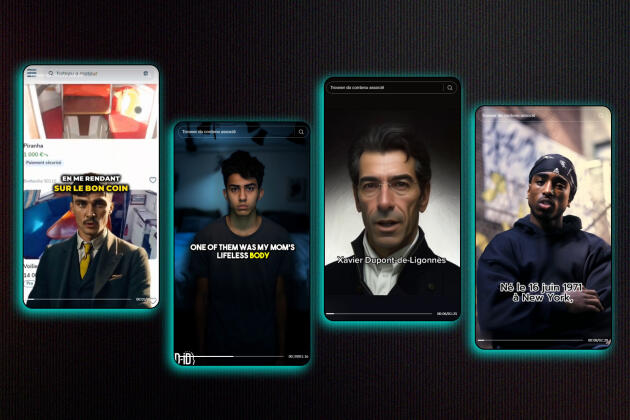


AI content creators on TikTok bank on the business of deepfake true crime stories
In DepthBehind the avatars or people created by artificial intelligences that abound on the social media platform, a race for virality and dubious training course sales are revealed.
The image is disturbing, to say the least: In a TikTok video, the face of Josef Fritzl, presumably generated by artificial intelligence (AI), comes to life. In a synthetic voice, in French, the Austrian criminal recounts the kidnapping and rape of his daughter, for which he was sentenced to life imprisonment.
"Subscribe, that's what I should be saying to you in the middle of this dark story," he throws in halfway through the video. Conceived with the AI platform christened D-ID and published by a small account, this one garnered a near-zero audience. On the other hand, it is representative of an extremely popular format: A face, belonging to a real or fictional person and created by AI, which performs clairvoyance, tells a gloomy true crime story or an incredible tale. Le Monde has counted around a hundred TikTok accounts specializing in this format, some of which boast several hundred thousand subscribers, and videos in French, Arabic, English, Spanish, German and Italian that sometimes rack up millions of views.
Among these formats, it's true crime that's the most talked-about, whether in Le Figaro or Rolling Stone. In addition to Fritzl, these accounts regularly feature Xavier Dupont de Ligonnès (the still on the run patriarch of a family whose wife and four children were murdered in 2011) Grégory Villemin (a cold case involving a French boy abducted and killed in 1984) or, more recently, Dominique Bernard, a teacher who was killed in a knife attack. These videos often emerge in the aftermath of the events, surfing on the popularity on the platform of videos linked to criminal cases. They often don't feature the faces of the people involved, who are rarely famous enough to be known by image-generation tools, but rather fictitious men, women and children.

These videos don't even bother to tell true stories, relaying sordid tales that have little credibility, or are even totally made-up. Some of these TikTok channels specialize in videos of female characters talking about being sexually assaulted or raped by animals. In one example investigated by Le Monde, the video of a story about a woman raped by dolphins, totally fictitious, was picked up so much on TikTok that it motivated the creation of articles on news sites, themselves generated by AI.
Click-through business and dropshipping
While true crime now accounts for the bulk of content using this AI-generated face camera format, the format permeates many areas of TikTok. Among the hundred or so channels analyzed by Le Monde, some are devoted to fortune-telling and astrology, delivering mystical advices or horoscopes with low-quality characters. Others, again with varying results, feature historical figures, from pop stars to Napoleon Bonaparte. There are even religious channels featuring AI-animated portraits of Jesus.
You have 61.05% of this article left to read. The rest is for subscribers only.
